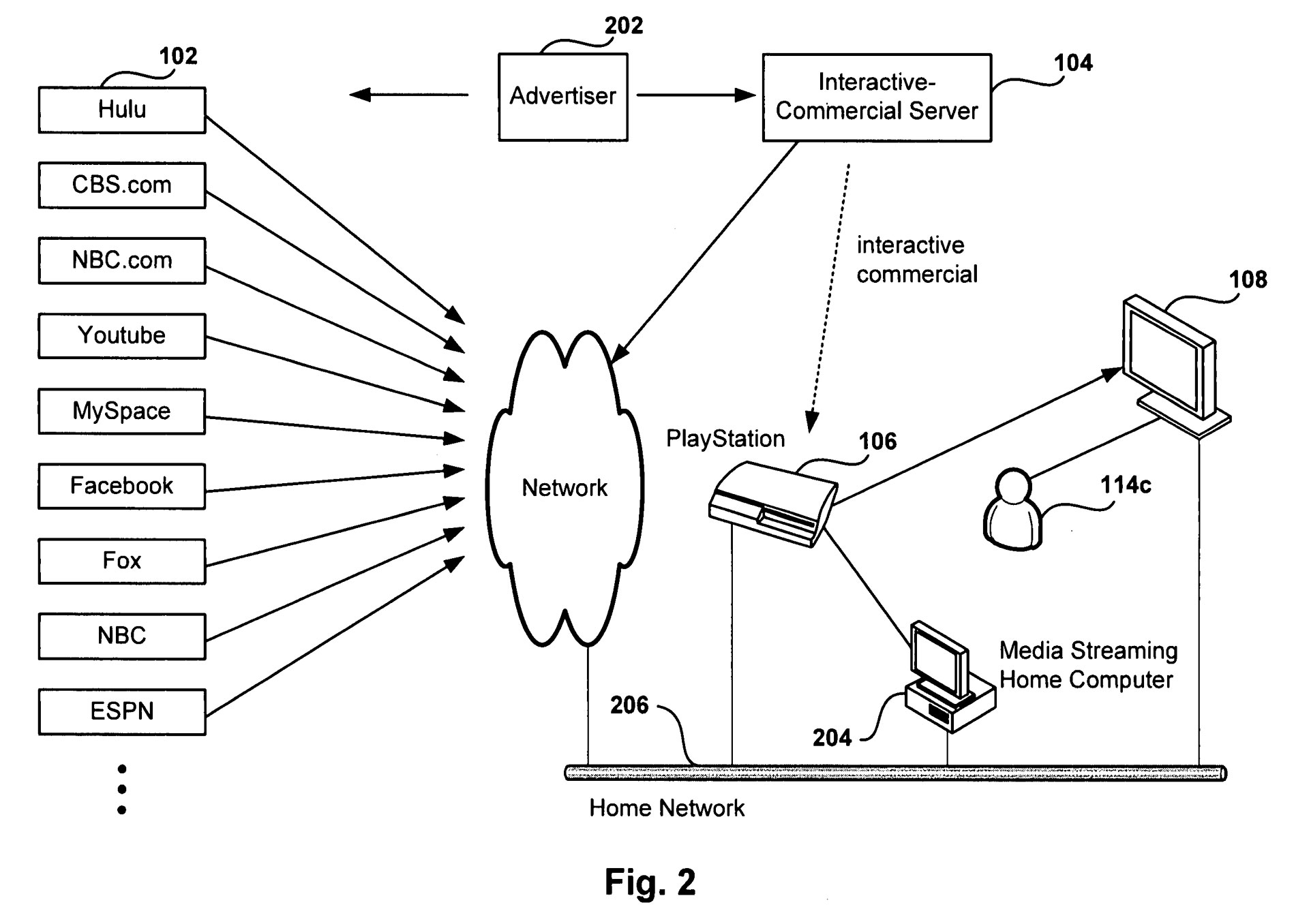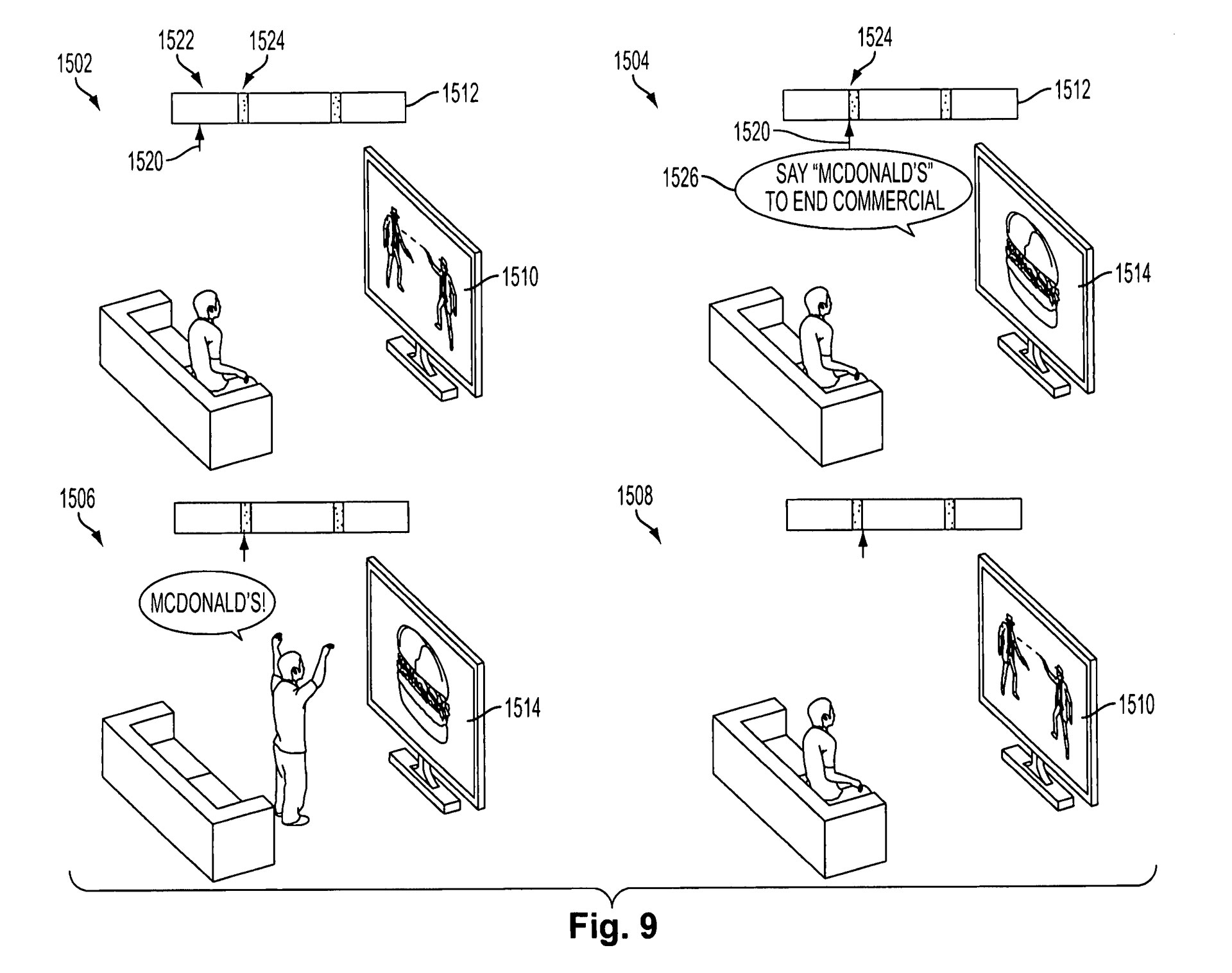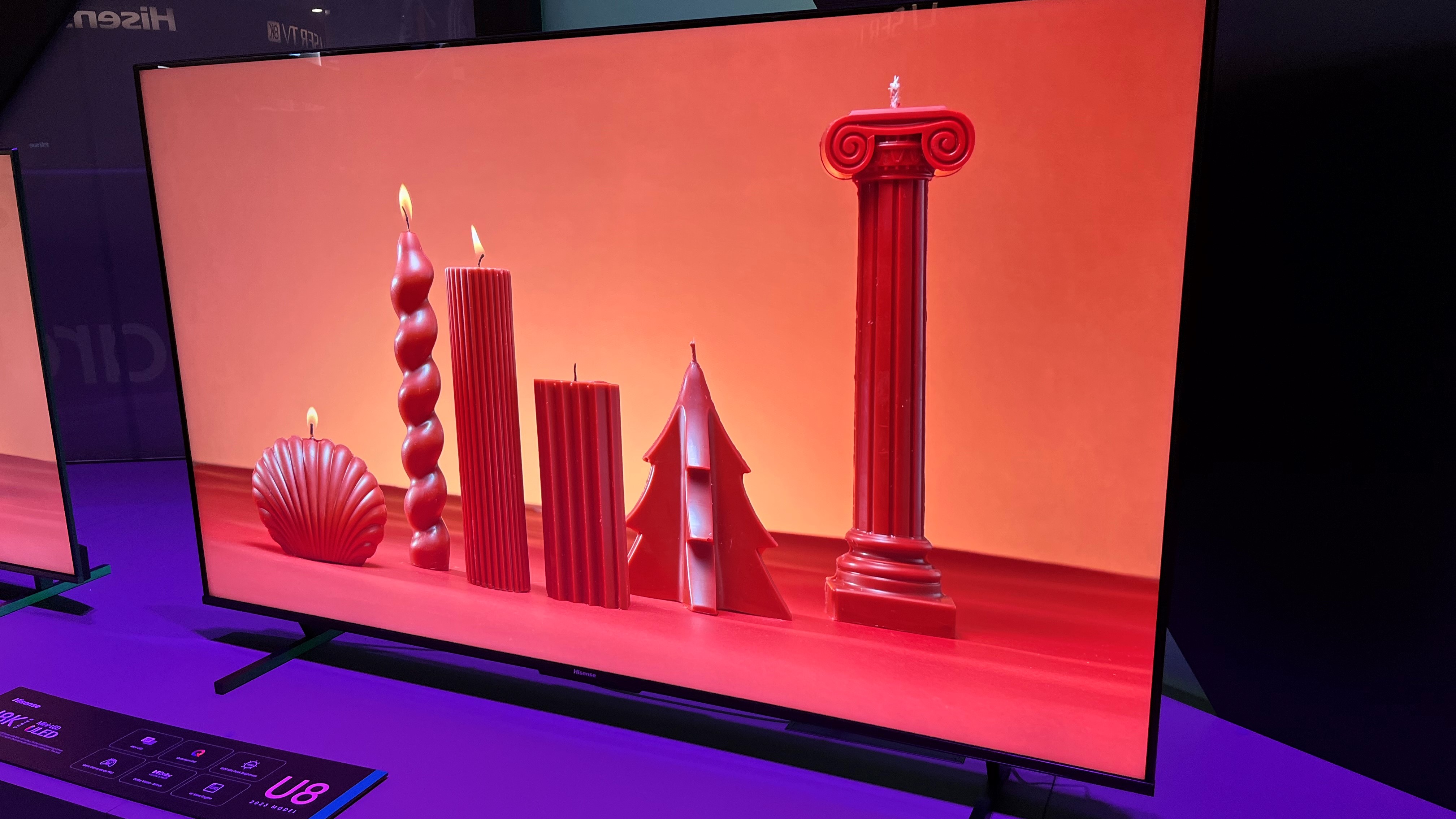Imagine being trapped inside commercial hell where the only escape is your voice. Who would cook up such a thing?
According to a tweet that's been viewed over 18 million times, this was Sony's brilliant idea. I almost did a spit-take when the tweet rolled into my feed. It's not a full patent, just an illustration from one that shows someone sitting on a couch watching a TV show in which one person is shooting someone else (weird to have such unnecessary violence in a patent). A McDonald's commercial represented, naturally, by a giant hamburger appears on screen with the message, "Say 'McDonald's' to end commercial." The TV watcher enthusiastically leaps to his feet and yells "McDonald's" and then it's back to the on-screen violence.
That does look like someone is ending a commercial with their voice. But that's not the whole story.
Sony owns a patent that would force viewers to exclaim the brand name during commercials to end them. pic.twitter.com/DC3rcKvzlLJanuary 9, 2023
The total lack of context around the tweet and patent drawing intrigued me. Where did this image come from? Having looked at hundreds of patents over the years, I was convinced that this was, in fact, a real patent drawing (not that someone couldn't have purposely drawn something to mimic one).
I decided to investigate if this was from a real patent. That's not as easy. There are, according to my friends at the US Patent and Trademark Office, more than 11.5M patents (not including the ones lost in a fire in 1836).
The US Patent Office has a search engine, but it doesn't always make it easy to find what you need. I tried searching on "Sony" and "Commercials" but didn't bring back anything that resembled this patent or image.
I switched to Google and searched on "sony end commercials brand name". The first result was for the popular tweet. Thanks, Google.
Scrolling down, though, I noticed articles from 2014 and 2013. All of them highlighted the same image and offered the same lack of context. On Reddit, a post devoted to the image was removed by moderators because it had "no proof/source." No one seemed to know where to find the original patent.
Turns out, though, that there is proof and a source, and I found it in Google Patents. The often-shared image is just one of 21 illustrations from Patent No. US8246454B2, "System for converting television commercials into interactive networked video games," by inventor Gary M Zalewiski.
Sony applied for the patent back in 2009. The application was granted in August 2021.
The patent is not, ostensibly, about trapping consumers in commercial hell until they jump up and yell a brand name. Here's part of the abstract:
"In one method, a broadcast or streamed commercial is accompanied by an interactive segment. A media player coupled to the broadcast or streaming media source identifies the existence of the interactive segment and presents the user with an enhanced and interactive mini-game commercial that can be played with other “viewers” in a common or disperse demographic."
Based on the description and images, this patent is about interactive and actionable commercials. You could play games within them or even order products. In one illustration, the system shows a TV connected to both a "Media Streaming Computer" and PlayStation (it looked like a PS3). The gaming console connects to an Interactive Commercial Service, which then talks on the back end to an Advertiser or one of almost a dozen networks, including NBC, CBS, Hulu, and, yes, MySpace.

Each parent illustration or "Figure" as they're called in patents, comes with a little caption. Here's how the key image is described.
"FIG. 9 illustrates a user interacting verbally with a commercial, according to one embodiment."
I know, not much to go on.
The more detailed description of the patent, though, makes clear exactly what's happening in that illustration, and, it's even stranger than I thought.

I won't put the entire description here because it's too long and clearly written by someone who isn't interested in elegant prose. Instead, I'll list the steps:
- Someone is watching a movie
- The movie's progress bar shows that a commercial break is coming up (that's something you can see today on services like Hulu).
- The commercial starts
- It's interactive and triggers the on-screen display of "Say McDonald's to end commercial"
- The viewer says "McDonald's (we'll never know why he chose to jump up and raise his arms).
- The viewer's words are captured by a microphone on the TV
- Voice recognition readers the response
- The system skips the rest of the commercial
- The viewer resumes watching the show
- The viewer might get a reward or coupon from the commercial sponsor: i.e. McDonald's
The only wrinkle here is that this is not so much about trapping anyone in an infinite loop of commercials, it's really about triggering user engagement with the carrot of a possible reward. I mean, I'd happily yell, "Subway!" or "Cialis!" to end a commercial more quickly.
And that's the key. This was never an invention intended to create a Morbius strip of commercials that you could only leave if you spoke up. It was, in part, an interactive incentive system, perhaps the first-ever in the history of live TV broadcasts.
I sent queries to both Sony and the inventor to learn more about the status of this patent. If I hear back, I'll update this story.
It's always fun to post, share, and laugh about these standalone images but it's just as important to remember that they rarely, if ever, tell the whole story. For me, the patent is now far more interesting, if even a little weirder.
I truly cannot wait until we are all yelling at our Best TV of 2023 with a real purpose.
from TechRadar - All the latest technology news https://ift.tt/ZCncbfH

